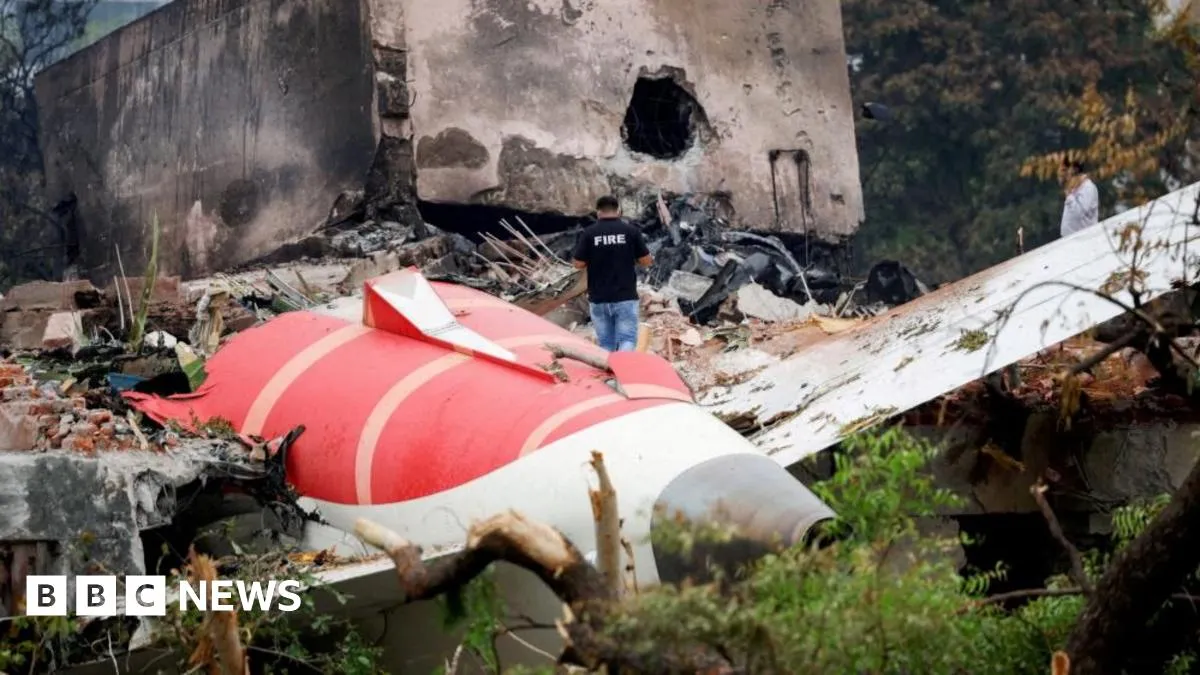
The latest preliminary report regarding the tragic crash of Air India Flight 171 has indicated that the fuel samples taken from the aircraft's refueling tanks were deemed to be satisfactory. This finding is significant, especially considering prior warnings from aviation experts who suggested that fuel contamination could have played a crucial role in the crash. Additionally, a dual engine failure, potentially stemming from fuel clogging or contamination, remains a concern in aviation safety.
Aircraft engines depend on a precise fuel metering system; any blockage in this system can lead to fuel starvation, resulting in an engine shutdown. The report notes that only a limited quantity of fuel samples was collected from the Auxiliary Power Unit (APU) filter and the Refuel/Jettison valve located on the left wing. Testing of these samples will be conducted at an appropriate facility capable of managing the limited volume available, as stated in the report.
The aircraft involved in the incident was a Boeing 787-8 Dreamliner, a model that has been in operation for 14 years. The preliminary findings reveal that, at this stage of the investigation, there are no recommended actions for operators or manufacturers of the B787-8 and/or GE GEnx-1B engines. Air India, which operates a fleet exceeding 190 aircraft—including 58 Boeing models—has been in the spotlight following this incident. The crashed Dreamliner was 11 years old and had logged over 700 flights in the year prior to the disaster, according to data from Flightradar24.
As reported, the preliminary investigation into the Air India Flight 171 crash revealed that both engines were almost simultaneously switched from 'run' to 'cut-off' shortly after takeoff. This maneuver caused the Boeing 787 Dreamliner to lose thrust and descend rapidly before crashing in Ahmedabad, India. The action of flipping to 'cut-off' immediately cuts off fuel supply to the engines, which typically occurs when a plane reaches its destination and the engines are turned off. While this can also happen during emergency situations, the report did not indicate any such emergencies occurred on board.
The investigation into the Air India crash is being meticulously conducted by India’s Aircraft Accident Investigation Bureau, supported by specialists from various fields, including aviation medicine and air traffic control. Additionally, representatives from the US National Transportation Safety Board (NTSB) are involved in the process. Following the crash, both black box recorders were recovered—one was located on the rooftop of the crash site on June 13, and the other in the wreckage on June 16. Data extraction from these recorders commenced on June 24, with the aim of reconstructing the sequence of events leading up to the accident and identifying factors that could enhance aviation safety in the future.
The preliminary report has drawn attention to the actions of the pilots during the unfortunate incident. According to data retrieved from the flight recorder, both fuel control switches were moved from the 'run' to 'cut-off' position shortly after takeoff, leading to a loss of thrust in both engines. In a significant moment captured in the cockpit voice recording, one pilot queries the other about why the 'cut-off' was engaged, to which the responding pilot claims he did not initiate the action. At the time of the incident, the co-pilot was in command while the captain monitored the flight. After the switches were adjusted back to their normal inflight position, one engine began the process of regaining thrust just before the crash, while the other was still in the process of relighting.
At this stage of the investigation, there are no recommended actions for operators of the B787-8 or GE GEnx-1B engines, suggesting that no significant faults were found with the aircraft or its engines. It is important to note that the investigation is ongoing, and further findings may provide more clarity on the circumstances surrounding the crash.